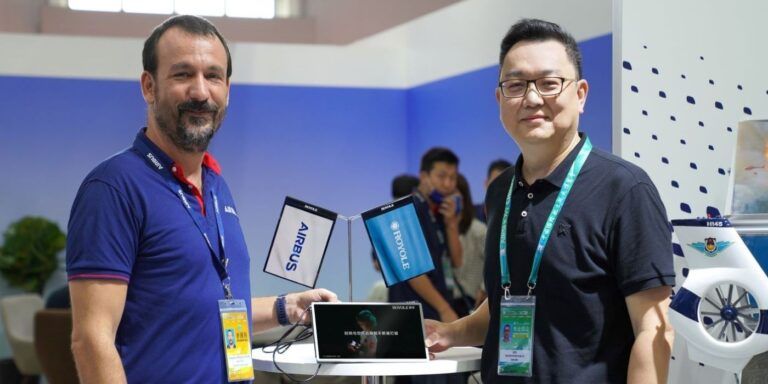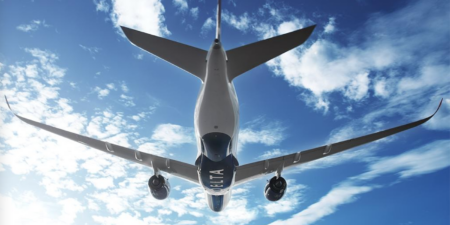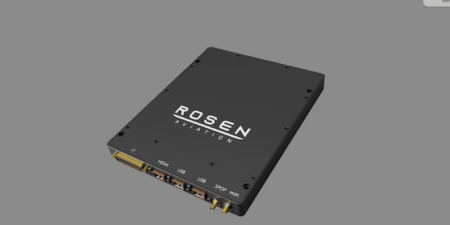Airbus demonstrated three flexible display prototypes for aircraft cabins at Airshow China in Zhihai last week, which it says could represent the ‘human-machine interface of the future’. The flexible displays are ultra-thin and ultra-light, and can be adapted to any cabin surface with minimum integration efforts. Such displays can be used in new ways to improve the passenger experience, such as re-imagining inflight entertainment, and for creating new spaces and opportunities for advertisers to exploit.
The displays have been developed by Royole Corporation, a leader in flexible displays and sensors, with which Airbus partnered in 2018. The company is known for several flexible technologies, including developing the world’s thinnest, full-colour fully flexible display, the world’s first mass production facility for fully flexible displays, and the world’s first commercial foldable smartphone with flexible display to be brought to market: the FlexPai.
“Utilising fully flexible displays instead of traditional liquid-crystal displays (LCDs) in aircraft can reduce both cost and weight, saving fuel and reducing carbon emissions in airliners, which will provide new paths to improving the sustainability of our world,” said Hong Zhao, COO of Royole Corporation.
Royole’s flexible displays meet the aviation industry’s strict quality and safety standards, passing the AS9100 and DO160 tests for flammability, toxicity and smoke. Royole says it is the only flexible display manufacturer with hardware ready to install in aircraft cabins.





